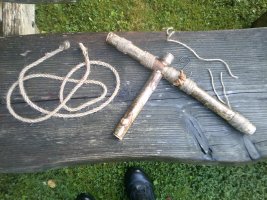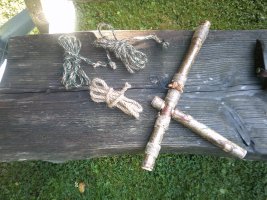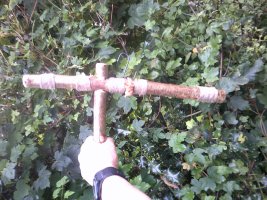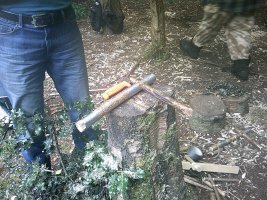Fix three strands of string to the notch/hook and the other ends to a fixed point. Sptin the stick clockwise until the strings twist tight enough to twist together when you release the tension. Feed the cords (under tension) in thirds to the hook. Spin anti clockwise until the strings are now a rope... more detail...
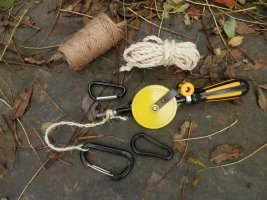
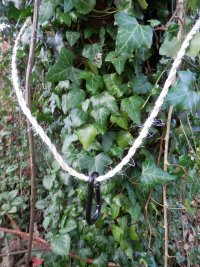
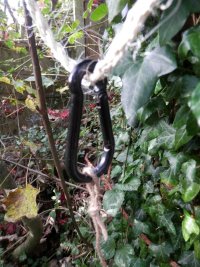
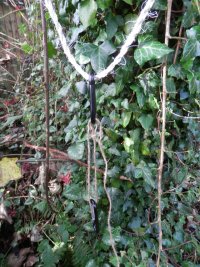
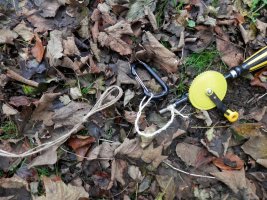
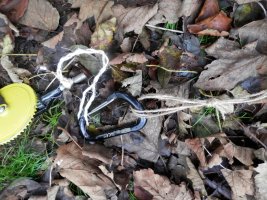
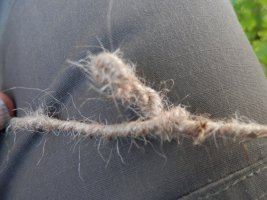
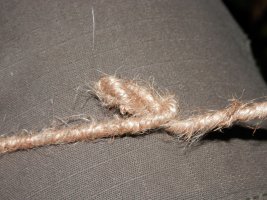
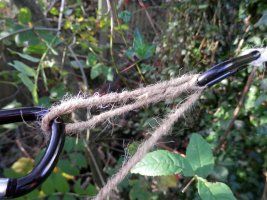
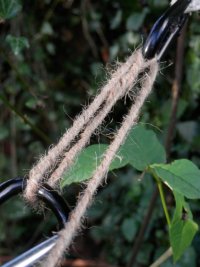
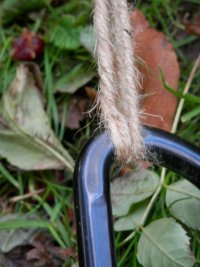
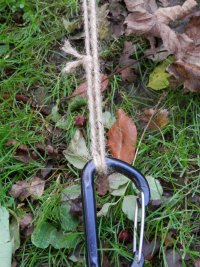
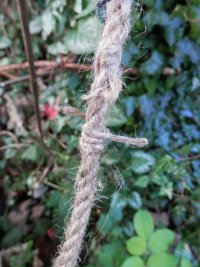
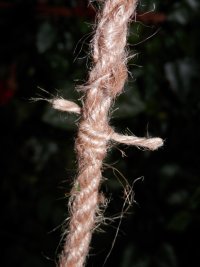
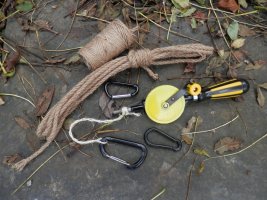
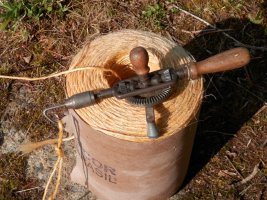
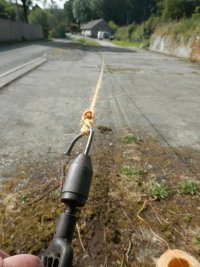

This technique is similar to the traditional ropemakers' methods and dates back to antiquity - and again requires minimal equipment. Twisting rope from cord does, however, require space. To make a 10ft rope you need around 40ft of clear space to work in, and lots of twine. You get a rope about one-tenth the length of the twine you use if you are making a “3 twist” rope.
User the spinner in place of the drill to spin the string

The equipment needed is simple, A hand drill, a few karabiners,something to tie a karabiner to a fixed point, and the twine. Theoretically, you could use an electric drill to do this, but Iprefer using hand tools.
Firstly I remove the chuck from the drill and tie a loop of twine and a karabiner to the shaft of the drill (originally I used a bent nail/hook in the chuck but this often pulled out under tension) and tieanother karabiner to a fixed point at one end of your ropewalk. Tie one end of your twine to this karabiner then pull a loop of twine through this karabiner so that you have 3 strands hanging below this“fixed point”. Clip a third karabiner through this loop and then carry your ball of twine and the loop to the far end of your ropewalk(the karabiner through the loop helps you avoid rope burns) and tie the loop and end of the twine to the karabiner (or hook) attached to the drill.
Now simply turn the drill (I usually turn it clockwiseat this point) so that all 3 strands of twine twist tightly together. When the twist is so tight that it starts kinking and twisting once tension is released it is tight enough.
Keeping the twisted twine under tension, return to your “fixed point” andpull a loop of the twisted twine through the karabiner and back tothe drill. Clip the loop into the karabiner (or hook) on the drill and turn the drill anti-clockwise until the 3 strands twist up tightly.
It does not matter if you over-twist the cord at this stage as any excess twist will disappear when the tension is released.
Before unclipping the ends of your newly-formed 3-twist rope, whip ortie the cord at each end at a “clean” point (i.e. below any point where your attachment to the karabiners show). I cut off the untidy ends and sometimes go to the lengths of dipping the ends in tar, wax or glue to seal them (if using natural fibre twine), or heat seal the ends together.
ROPEFROM STRING
PHOTOCAPTIONS
2. Rope from string The equipment
3. Rope from string Loop and karabiner around tree
4. Rope from string Tie twine onto karabiner on cord around tree
5. Rope from string Pull loop of twine through karabiner
6. Rope from string Tie all three lengths of twine into a loop
6a. Rope from string Clip the twine into the clip on the drill
7. Rope from string Wind the twine one way until it kinks whentension is released
7a. Rope from string Wind the twine one way until it kinks when thetension is relaxed
8. Rope from string Pull a loop of the twisted twine through thekarabiner
8a. Rope from string Pull a loop of the twisted twine through thekarabiner
9. Rope from string Clip the loop into the clip on the drill thentwist in the opposite direction
9a. Rope from string Clip the loop into the clip on the drill thentwist in the opposite direction
10. Rope from string Whip the end of the cord to prevent unravellingand cut it free
10a. Rope from string Whip the end of the cord to prevent unravellingand cut it free
11. Rope from string Finished cord
12. Drill with hook in chuck and baler twine
13. A long ropewalk
14. Long ropes from a long ropewalk

